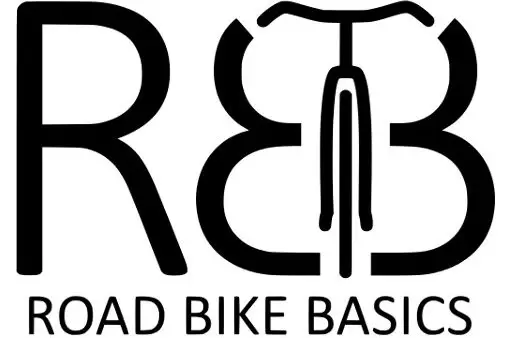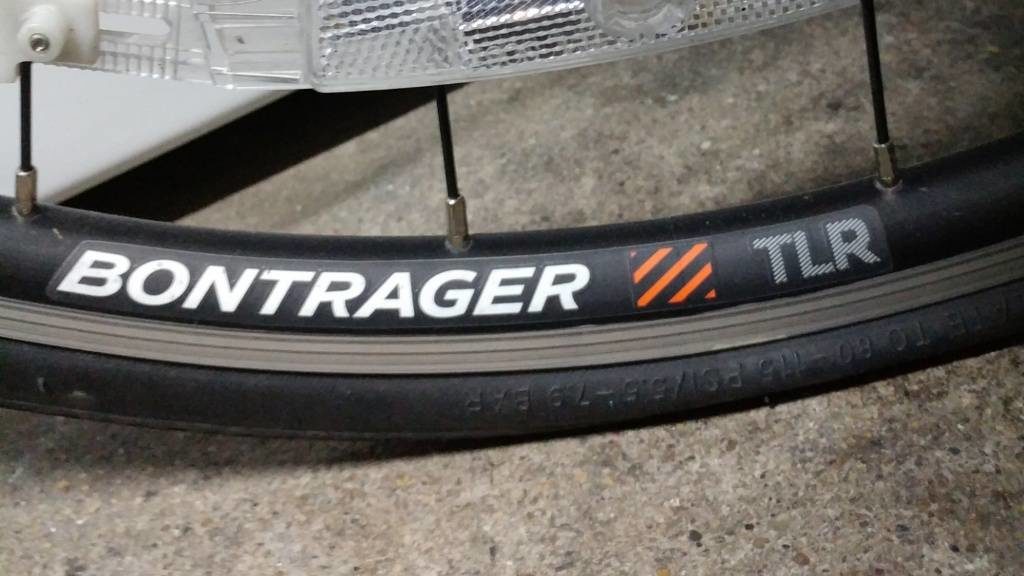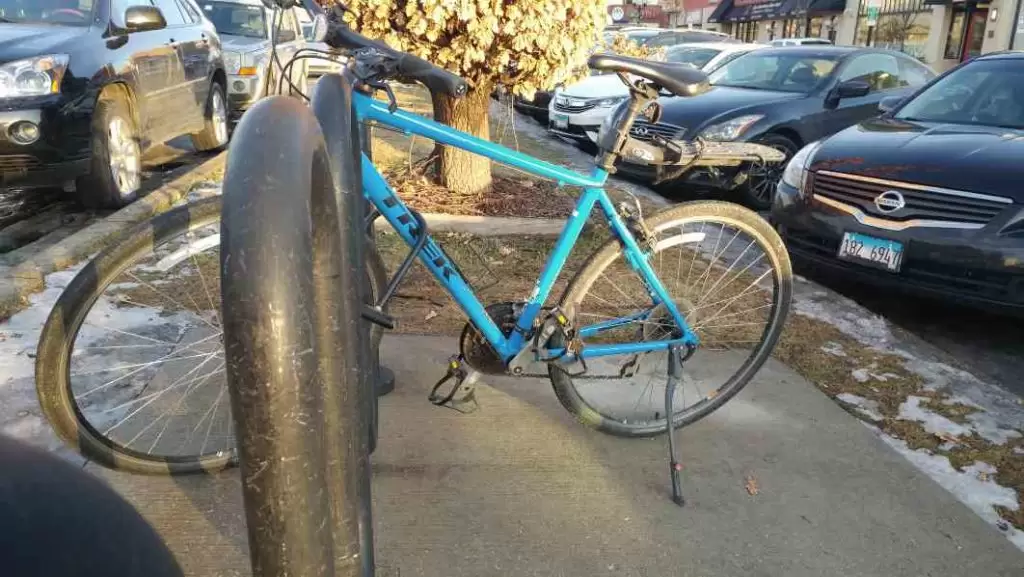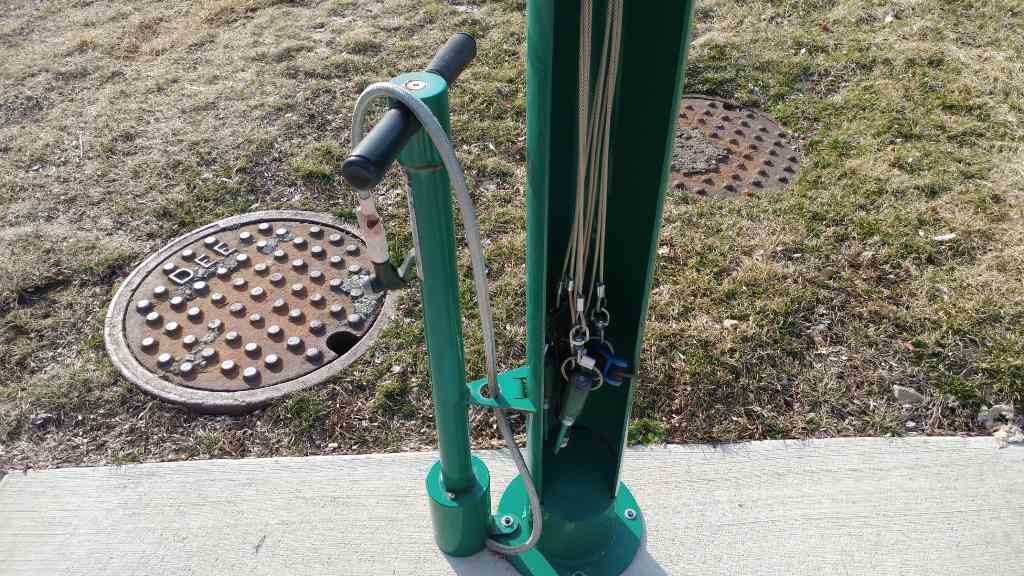I’m not too proud to admit that I’ve had to walk a bike home with a completely preventable flat tire. I’ve learned since then about the importance of checking your tire pressure.
You should pump up your road bike tires at least once or twice a week, or before every
Your tires should be somewhere between 80 and 130 psi. Here is a link to my post about how to pick the right tire pressure for you and your ride.
How Pressure Changes Over Time
The pressure in your tires will naturally go down over time, whether they have tubes or are tubeless. Neither system is perfect, and they both slowly leak air. This makes sense because road bikes have very high pressures.
The higher the pressure, the more likely that the air will find a way to leak out. As well, road bike tires have a relatively small volume of air in them. So, even if only a little bit of air has leaked out, it means that a larger percentage of the total air is gone.
The temperature can also affect the pressure in your tires. For a given volume of air, the pressure will increase and decrease along with temperature. So, If you filled up to the right pressure in a cool garage, but you are out riding on piping hot pavement, expect the pressure in your tires to go up.
Thankfully, this doesn’t have a huge affect on the pressure. However, there have been occasions where people left their bikes baking in the hot sun, and their tires popped after getting too hot.
Why You Should Check Your Tire Pressure
Riding your bike with the right tire pressure is very important. While tuning the pressure within a certain range will get you minimal returns, having a pressure outside of that range can actually cause damage. Riding with a low tire doesn’t just slow you down, it also wear out your tube and tire really fast. If your pressure gets low enough, you’re more likely to puncture the tube than you are to enjoy your ride.
All of the different problems really just result in an increased amount of maintenance. You’ll need to buy more tubes, buy more tires, install them yourself, or go to a shop and pay someone to install them for you.
Investing in a cheap floor pump and using it regularly can pay for itself. Plus, taking more control over your tire pressure can result in a more enjoyable and safer ride! Click here to read a post about picking a good tire pressure for your road bike.
How To Check Your Tire Pressure
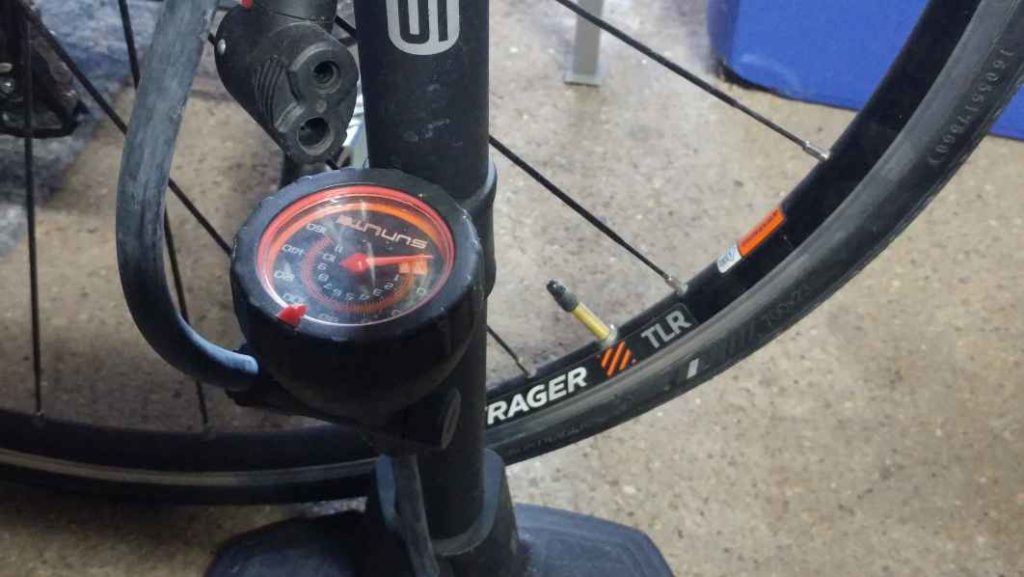
My suggestion is that you have a floor pump and you pump up your tires before every ride. Here is a link to check the price on Amazon. Make sure that you pick one with a pressure gauge. Getting it to the right pressure should be straight forward as long as you are paying attention.
Just remember that you can pop a tire by pressurizing it too much. There are ways to check your pressure without pumping, though.
Compressing the tire, either by pressing hard with a finger or by sitting on the bike, is a fast and free way to check your pressure. It should compress very little under your finger, and a bit more when you sit on it. Not very much, but definitely some.
he ideal amount of “squish” derived by cycling scientists is 15% of the thickness of the tire. That’s hard to eyeball, though. As long as it gives a little bit, but not more than a few millimeters, then you should be okay.
The more official way to check the pressure without using a pump is to get an actual tire pressure gauge. Here’s a link to Amazon to see a few. You just press it onto the valve, and it will show you the pressure while not letting out much air. This is also much faster than setting up an entire pump.
I have a really easy digital one for my car, but I felt like getting one for my bike was more effort than it was worth based on how I get ready for rides.
It just comes down to what your pre- and post-ride rituals look like, and how often you are actually checking the tires. I’d definitely have a gauge if I was checking tire pressures for more than a couple of bikes at once. That is way better than spending the time dealing with passing around one bike pump.
There are also miniature pumps that attach to your bike frame that you can use in if need to replace or inflate your tire while you are out on a ride. If you want one, this one on Amazon comes with a gauge and It has a ton of good reviews. So, I’m confident it’s actually useful and a good deal.
When To Check And What To Look For
Going online, most people suggest checking your pressure before every ride. I agree. I’ve made it a part of my pre-ride ritual. Sure, it’ll add a minute or two depending on certain things, but it isn’t much. Besides, it can keep me from getting stranded 20 miles from home.
If checking before every ride isn’t your style, I’ve also seen it be suggested that you check one or two times a week. If you aren’t riding far, and you know when you last pumped up, you are pretty safe to just hop on your bike and go.
Taking the time over the weekend to refresh your tire pressure is also much more reasonable when you have to keep your bike in a shared space. I did this in college when I kept mine in the “bike room” and never ran into problems.
Outside of regular maintenance, here’s where I go over a short, non-exhaustive list of occasions when it would be a good idea to check your tire pressure.
- You’ve gone a long time without riding. Remember, tires deflate slowly over time. So, going a few weeks or months is plenty enough time for the pressure to drop.
- There’s been dramatic tire temperature change. This includes going from a cool garage to hot pavement or vice versa.
- After a ride on puncture prone terrain. Riding on gravel, sticks, broken glass, large pointy rocks, a series of unfortunately placed curbs, and beds of nails all put your tires at risk of getting a puncture.
- It looks a bit flat. If you can visibly see that your tire looks a little low, especially without sitting on it, then you need to check the pressure. I know that sounds kind of obvious, but there is no point to putting your tires at risk when it only takes a couple of minutes to make sure you’ll be able to keep on riding.
I hope that all of this has given you the confidence you needed to get on your bike without worrying about if you should have checked your tire pressure.
Thanks for being here!
I make content that empowers people to enjoy riding their bikes.
Are you interested in learning more about that?
Here are some hand
